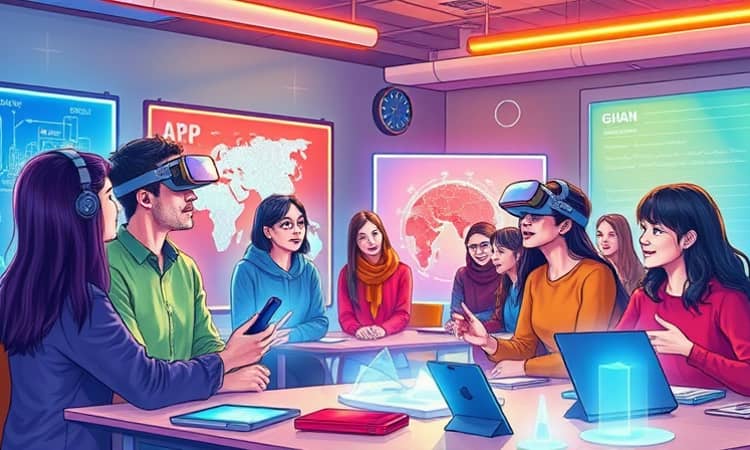As the world embraces digital transformation, e-learning stands at the cusp of a revolutionary era. The global market is projected to surge from $314.03 billion in 2024 to $354.71 billion in 2025, and soar to $625.3 billion by 2029. Educators, corporate trainers, and learners alike are seeking innovative solutions that combine flexibility, accessibility, and engagement to meet evolving demands.
In this comprehensive exploration, we delve into the dominant and emerging trends shaping online education through 2025 and beyond, offering practical insights and inspiring strategies to thrive in a rapidly changing landscape.
Market Growth and Key Drivers
Rapid expansion in internet penetration and government initiatives have fueled unprecedented investment in digital education. Organizations are prioritizing remote learning solutions to maintain continuity and scale training across geographies.
- Global market growth: 13.0% CAGR from 2024 to 2025
- Projected 15.2% CAGR through 2029
- Top drivers: flexible learning, digital globalization, professional upskilling
With corporate, academic, and government sectors all contributing, demand for niche subject training, online degrees, and inclusive education models continues to rise. Stakeholders must stay ahead by adopting agile technologies and learner-centric design principles.
Artificial Intelligence and Hyper-Personalization
Artificial intelligence is no longer a futuristic buzzword; it is fundamentally reshaping content creation and delivery. By leveraging machine learning algorithms, platforms can rapidly generate personalized learning experiences tailored to individual needs.
- AI-powered recommendations adapt to user behavior and performance
- Predictive analytics anticipate learner challenges in real time
- Virtual tutors and chatbots provide on-demand support
These innovations empower educators to focus on facilitation and mentorship, while learners benefit from dynamic pathways that boost engagement and retention.
Microlearning and Mobile-First Strategies
Busy professionals and time-constrained students increasingly favor bite-sized, skill-focused content. Microlearning modules—often delivered via push notifications—cater to the modern attention span, improving recall and application.
Simultaneously, a mobile-first approach ensures accessibility anytime, anywhere. Companies like Walmart have reported a 50% reduction in training time for front-line staff after adopting mobile apps, while 72% of learners demonstrate higher engagement on smartphones and tablets.
To harness this trend, course designers should prioritize responsive layouts, concise video segments, and interactive quizzes that load smoothly on all devices.
Immersive Learning with VR and AR
Virtual reality (VR) and augmented reality (AR) are transforming theoretical lessons into immersive hands-on experiences that transform training. From medical simulations to virtual site tours, these technologies bridge gaps between knowledge and practical skills.
VR/AR-driven modules not only enhance motivation but also accommodate diverse learning styles. Blended learning models that integrate virtual lab sessions with in-person workshops deliver holistic outcomes, boosting both competence and confidence.
As hardware becomes more affordable, institutions can pilot small-scale VR experiences and gradually expand their offerings based on learner feedback and performance metrics.
Gamification and Social Collaboration
Gamification has evolved beyond simple point systems. Today’s meta-games weave narrative, competition, and reflection into an ecosystem that encourages sustained participation. By using adaptive gamified experiences for every learner, training programs promote intrinsic motivation and long-term retention.
- Achievement badges tied to real-world skill milestones
- Leaderboards customized by role and region
- Peer challenges and collaborative quests
Cloud-based platforms also emphasize social learning, with discussion forums, peer reviews, and mentorship networks enabling participants to co-create content and share insights, fostering vibrant learning communities.
Analytics, Blended Models, and Accessibility
Data-driven decision-making is a cornerstone of effective e-learning. Advanced analytics dashboards provide educators with granular insights into learner progress, content performance, and potential skill gaps.
Blended learning models—merging self-paced e-learning with live virtual sessions—offer maximum flexibility. Organizations can sequence asynchronous modules before instructor-led workshops, ensuring learners arrive prepared and engaged.
Inclusive design principles are also paramount. By implementing accessible design and global usability, course creators ensure content accommodates learners with disabilities and cultural diversity. Features such as captions, screen-reader compatibility, and localized translations broaden reach and equity.
Preparing for 2025 and Beyond
The e-learning landscape of tomorrow will reward innovation, agility, and learner-centricity. Institutions and enterprises should begin by auditing their current offerings, identifying gaps in personalization, interactivity, and accessibility.
Next, pilot emerging tools—such as AI-driven content generators or mobile microlearning apps—to gather real-world feedback. Measure success through engagement metrics, completion rates, and practical performance improvements.
Stakeholders must also foster a culture of continuous learning, incentivizing employees and students to explore new modalities and share best practices. By championing experimentation and collaboration, organizations can stay ahead of the curve and deliver transformative educational experiences.
Ultimately, the future of e-learning is not merely about technology—it is about empowering individuals to learn smarter, faster, and more inclusively than ever before. As we look to 2025 and beyond, the most successful programs will blend cutting-edge innovations with human-centered design, unlocking potential and driving positive change on a global scale.
References
- https://elearningindustry.com/elearning-in-2025-key-trends-shaping-the-future-of-education
- https://www.devlinpeck.com/content/elearning-trends
- https://trainingindustry.com/articles/strategy-alignment-and-planning/the-top-10-power-trends-shaping-elearning-in-2025/
- https://www.buddyboss.com/the-future-of-elearning/
- https://www.complianceg.com/e-learning-trends-2025/
- https://www.thebusinessresearchcompany.com/report/e-learning-global-market-report
- https://www.articulate.com/blog/2025-e-learning-trends-whats-in-and-whats-out/
- https://www.kwglobal.com/blog/the-future-of-learning-and-development-5-trends-for-2025/














